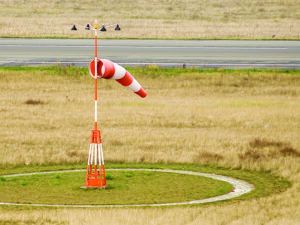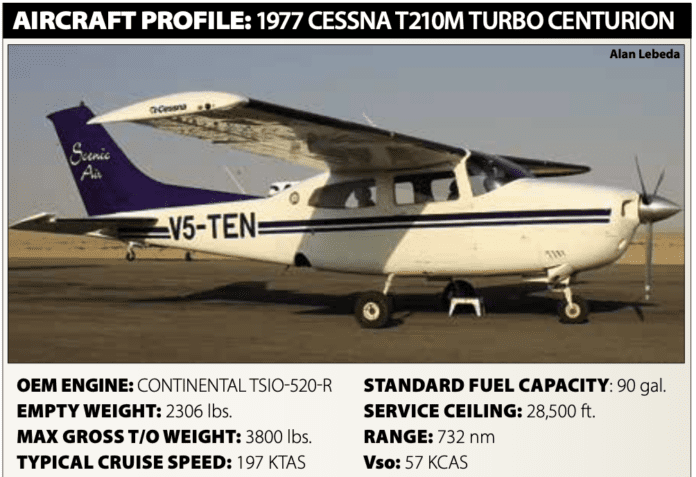Primary students often encounter a number of plateaus in their training. It might be stall recoveries, landings, cross-country navigation or something as simple as “mic fright,” a fear of using the radio to talk with ATC. Often, however, it’s crosswind landings and takeoffs. The reasons for difficulty with certain maneuvers and/or curriculum stages vary, but successful students—and their instructors—always find a way to overcome their phobia, lack of understanding or other learning plateau and go on to earn their desired certificate. Of course, whatever challenges a student may encounter that slows their training progress can often come back to haunt them when they go out on their own.
Crosswind runway operations can be one of those tasks. Without a solid foundation in the theory or adequate experience with landings and takeoffs when the wind isn’t aligned with the runway, what should be a relatively normal operation can be a too-exciting evolution from or onto the runway, often accompanied by bumps and swerves. That’s not good on the passengers or the airplane, and probably isn’t very satisfying for the pilot, either. But it’s also less of a problem than gusty crosswinds.
When some wind gusts are added, they make establishing and maintaining proper crosswind corrections much more problematic and dynamic. The likely outcome for an unprepared pilot departs the minimum-risk realm and becomes uncertain. And the FAA tells you in many ways that the outcome of a maneuver or operation should never be in doubt.
Learning crosswinds in a windy location like Kansas is different than learning them where conditions are reasonably predictable and benign. But those are steady-state winds. Throw some gusts into the mix—as might be the case after a cold front moves through or when there’s nearby convective activity—and all bets are off.
The thing is, we have to be able to fly both steady-state crosswinds and those with gusts. A successful outcome, one that was never in doubt, depends on the pilot’s ability. But it also can depend on the ability of the test pilot who flew the airplane to establish its limits, the demonstrated crosswind capability being one of them.
The good news is a botched crosswind landing rarely results in a fatality. The bad news is that it can, and here’s an example.
BACKGROUND
On May 2, 2021, at 1552 Central time, a 1977 Cessna T210M Turbo Centurion was destroyed when its pilot (male, 73) attempted a go-around after a poorly executed crosswind landing in gusty conditions near Oxford, Iowa. The solo private pilot was fatally injured. Visual conditions prevailed.
Earlier, the pilot told controllers he would be practicing landings at an airport within the local Class C airspace’s outer area. A witness adjacent to the intended runway reported the airplane entered a left traffic pattern for Runway 15. After touchdown, the airplane bounced, and the right wing lifted up to an estimated 45-degree angle. The airplane’s wings then leveled, and the airplane bounced a second time.
The airplane then landed and exited the runway surface to the left, entering a harvested corn field. The witness then heard the engine increase to full power as the pilot attempted to take off from the field. Instead, the airplane impacted a utility pole and power line near the corner of the field, and subsequently impacted terrain. A post-crash fire ensued. The witness estimated the wind to be from the west at about 20 knots at the time of the accident.

In any discussion of crosswind limitations, it’s inevitable that someone will note that the typical published “maximum demonstrated crosswind” for a CAR 3 or FAR 23 airplane is not a limitation. Instead, it’s literally the maximum crosswind value demonstrated, not necessarily the most it can handle. It may, however, be a limitation in airplanes certificated and/or operated in other categories, and there’s not really anything preventing a personal airplane manufacturer from making it a limitation. Here’s what the FAA Pilot’s Handbook of Aeronautical Knowledge (FAA-H-8083-25B) says about the what the term means.
The aircraft is tested by a pilot with average piloting skills in 90° crosswinds with a velocity up to 0.2 VS0 or two-tenths of the aircraft’s stalling speed with power off, gear down, and flaps down. This means that if the stalling speed of the aircraft is 45 knots, it must be capable of landing in a 9-knot, 90° crosswind.
INVESTIGATION
The main wreckage was located in the harvested corn field about 750 feet east of the departure end of Runway 15. The airplane’s landing gear tire marks were noted in the field and measured to be about 1200 feet in length. The distance from the end of the tire marks to the utility pole/power line was about 300 feet.
A separated outboard section of the left wing was located between the pole and main wreckage. The main wreckage, which was consumed by the fire, comprised the fuselage, empennage, engine and propeller assembly.
The propeller assembly was separated from the engine crankshaft and found embedded in the soft terrain. Flight control continuity was established to all flight control surfaces and cockpit flight controls. The NTSB could find no pre-impact anomalies involving the airframe or engine. The airport chosen for the practice landings has a single runway, aligned 15-33, 4000 feet long and 60 feet wide.
PROBABLE CAUSE
The NTSB determined the probable cause(s) of this accident to include: “The pilot’s loss of directional control during landing in gusting crosswind conditions that exceeded the airplane’s capability and his decision to attempt to take off from a field, which resulted in collision with a power pole/line and terrain.”
According to the final NTSB report’s commentary, “The airplane’s maximum demonstrated crosswind component during takeoff or landing was 21 knots. It is likely that the gusting crosswind lifted the airplane’s right wing and the pilot was unable to maintain directional control during landing. The pilot’s subsequent decision to attempt to take off from the corn field resulted in impact with the power pole/line.”
It’s clear that poor decision-making is a major factor in this accident. While the pilot’s decision to practice landings in stiff, gusty crosswinds can be debated, the delay before initiating the go-around coupled with the inexplicable decision to attempt a takeoff from the harvested corn field is one for the books.
Although the witness to this accident stated winds at the airport were from the west, the nearest automated weather, only eight miles away, reported them as from 200 degrees at 19 knots, with gusts to 27 knots. If the winds at the smaller airport were the same as at the nearby Class C facility, the 50-degree crosswind pencils out to 14.5 knots, well within the airplane’s 21-knot maximum demonstrated capability. Even if the advertised maximum gust is used, the crosswind was “only” 20.7 knots, fractionally still within the max-demonstrated value.
On the other hand, if the witness’s wind estimation is correct, the airplane was landing with a quartering tailwind. No wonder the pilot lost control. But sometimes it’s better to close the throttle and ride it out.




